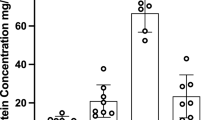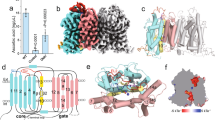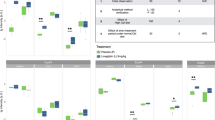Abstract
WHILE vitamin D2 and vitamin D3 are equipotent antirachitic agents in most mammals1 ergocalciferol (D2) is approximately 1/100 as potent as cholecalciferol (D3) in preventing or curing rickets in young chicks2. Although the basis of the insensitivity in chicks to D2 has not yet been elucidated, it had been noted that radioactive vitamin D2 is cleared from blood more rapidly than radioactive D3 while inactive metabolites of D2 are excreted more rapidly in the bile and faeces3. We have shown that a specific transport protein for vitamin D and D metabolites exists in the plasma of D-deficient chicks as well as in the plasma of several mammalian species4. These specific transport proteins serve to solubilise vitamin D compounds in the aqueous environment of plasma and to protect the steroids from oxidative inactivation5. Since vitamin D requires efficient plasma transport to the liver and the kidney for successive enzymatic hydroxylations6–8 and the ‘activated’ metabolites must, in turn, be transported efficiently to the target tissues, we undertook studies to test the hypothesis that the lower potency of D2 might, in part, reflect weaker binding of vitamin D2 and its metabolites to the chick plasma transport protein.
This is a preview of subscription content, access via your institution
Access options
Subscribe to this journal
Receive 51 print issues and online access
$199.00 per year
only $3.90 per issue
Buy this article
- Purchase on Springer Link
- Instant access to full article PDF
Prices may be subject to local taxes which are calculated during checkout
Similar content being viewed by others
References
Windaus, A., and Trautmann, Hoppe-Seyler's Z. physiol. Chem., 243, 185 (1936).
Steenbock, H., Kletzien, S. W. F., and Halpin, J. C., J. biol. Chem., 97, 249 (1932).
Imrie, M. H., Neville, P. F., Snellgrove, A. W., and DeLuca, H. D., Archs. Biochem. Biophys., 120, 525 (1967).
Nold, J. G., and Belsey, R. E., Fed. Proc., 32, 917a (1973).
Chalk, K. J. I., and Kodicek, E., Biochem. J., 79, 1 (1961).
Ponchon, G., Kennan, A. L., and DeLuca, H. F., J. clin. Invest., 48, 2032 (1969).
Fraser, D. R., and Kodicek, E., Nature, 228, 764 (1970).
Holick, M. F., Schnoes, H. K., DeLuca, H. F., Suda, T., and Cousins, R. J., Biochemistry, 10, 2799 (1971).
Belsey, R. E., DeLuca, H. F., and Potts, jun., J. T., J. clin. Endocr. Metab., 33, 554 (1971).
Burstein, M., and Samaille, J., Clin. chim. Acta, 5, 609 (1960).
Author information
Authors and Affiliations
Rights and permissions
About this article
Cite this article
BELSEY, R., DELUCA, H. & POTTS, J. Selective Binding Properties of Vitamin D Transport Protein in Chick Plasma in vitro. Nature 247, 208–209 (1974). https://doi.org/10.1038/247208a0
Received:
Issue Date:
DOI: https://doi.org/10.1038/247208a0
This article is cited by
-
Relative biological activity of vitamins D2, D3 and their 1α-hydroxy analogs in the chicken
Pharmaceutical Chemistry Journal (1982)
-
Vitamin D: Biochemistry and clinical applications
Skeletal Radiology (1977)
Comments
By submitting a comment you agree to abide by our Terms and Community Guidelines. If you find something abusive or that does not comply with our terms or guidelines please flag it as inappropriate.



